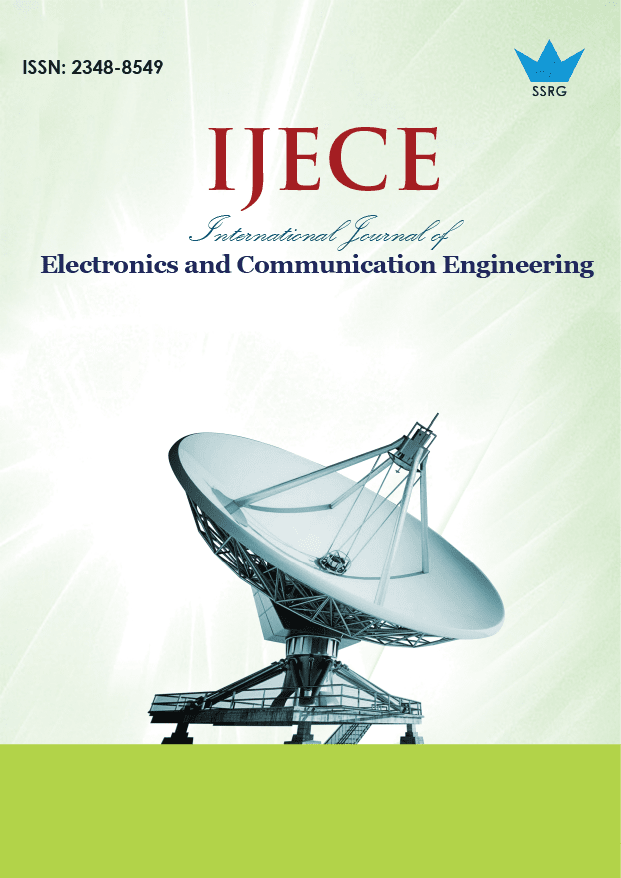Energy-Efficient Intrusion Detection in WSN-IoT Using Modified Dingo Optimization and Fuzzy Adaptive DeepNet

| International Journal of Electronics and Communication Engineering |
| © 2025 by SSRG - IJECE Journal |
| Volume 12 Issue 8 |
| Year of Publication : 2025 |
| Authors : D. Senthil Kumar, C. Arivalai |
How to Cite?
D. Senthil Kumar, C. Arivalai, "Energy-Efficient Intrusion Detection in WSN-IoT Using Modified Dingo Optimization and Fuzzy Adaptive DeepNet," SSRG International Journal of Electronics and Communication Engineering, vol. 12, no. 8, pp. 210-219, 2025. Crossref, https://doi.org/10.14445/23488549/IJECE-V12I8P119
Abstract:
Wireless Sensor Networks (WSN) and Internet of Things (IoT) need effective intrusion detection, which weighs between the high level of detection accuracy, low energy and low false detection rate. We introduce a power-efficient framework that uses Modified Dingo Optimization (M-DO) on fine-grained feature selection and Fuzzy-Improved Fuzzy Adaptive DeepNet (IFA-DN) on end-to-end attack classification. The path to designing the m-DO and IFA-DN is to exclude unimportant attributes to decrease the computational cost, as well as false alarms and complex intrusion patterns, by using the hybrid logic fuzzy and self-attention enhanced DeepNet architecture. Our strategy demonstrates a high degree of reliability and low overfitting through a 96.92 detection accuracy and an AUC of 0.9665 on the UNSW-NB15 and 99.77 as detection accuracy and 0.9971 as AUC score on the NSL-KDD benchmark, which operate in resource-limited settings.
Keywords:
Wireless Sensor Networks (WSN), Internet of Things (IoT), Intrusion Detection System (IDS), Modified Dingo Optimization (M-DO), Fuzzy-Improved DeepNet (IFA-DN).
References:
[1] Kuruva Lakshmanna et al., “A Review on Deep Learning Techniques for IoT Data,” Electronics, vol. 11, no. 10, pp. 1-23, 2022.
[CrossRef] [Google Scholar] [Publisher Link]
[2] Amrik Singh et al., “Deep Learning for Anomaly Detection in IoT Systems: Techniques, Applications, and Future Directions,” International Journal for Multidisciplinary Research, vol. 6, no. 4, pp. 1-9, 2024.
[CrossRef] [Google Scholar] [Publisher Link]
[3] Praveen Kumar Donta et al., “Learning-Driven Ubiquitous Mobile Edge Computing: Network Management Challenges for Future Generation Internet of Things,” International Journal of Network Management, vol. 33, no. 5, 2023.
[CrossRef] [Google Scholar] [Publisher Link]
[4] Quazi Warisha Ahmed et al., “AI-Based Resource Allocation Techniques in Wireless Sensor Internet of Things Networks in Energy Efficiency with Data Optimization,” Electronics, vol. 11, no. 13, pp. 1-13, 2022.
[CrossRef] [Google Scholar] [Publisher Link]
[5] Pengjun Wang et al., “Dynamic Optimization Method of Wireless Network Routing Based on Deep Learning Strategy,” Mobile Information Systems, vol. 2022, no. 1, pp. 1-11, 2022.
[CrossRef] [Google Scholar] [Publisher Link]
[6] Huanyu Wu, Yating Guo, and Jingcheng Zhao, “Research on Application Strategy of Deep Learning of Internet of Things Based on Edge Computing Optimization Method,” Journal of Physics: Conference Series, vol. 1486, pp. 1-6, 2020.
[CrossRef] [Google Scholar] [Publisher Link]
[7] Yakub Kayode Saheed et al., “An Efficient Machine Learning and Deep Belief Network Models for Wireless Intrusion Detection System,” Research Square, 2022.
[CrossRef] [Google Scholar] [Publisher Link]
[8] S. Neelavathy Pari1, and K. Sudharson, “An Enhanced Trust-Based Secure Route Protocol for Malicious Node Detection,” Intelligent Automation & Soft Computing, vol. 35, no. 2, pp. 2541-2554, 2023.
[CrossRef] [Google Scholar] [Publisher Link]
[9] K. Sudharson et al., “Enhanced Privacy-Preserving Federated Convivial Learning for Internet of Medical Things (IoMT) through Blockchain-Enabled Trust Q-Learning,” Journal of the National Science Foundation of Sri Lanka, vol. 52, no. 4, pp. 501-514, 2025.
[CrossRef] [Google Scholar] [Publisher Link]
[10] Vasilis Papastefanopoulos et al., “Multivariate Time-Series Forecasting: A Review of Deep Learning Methods in Internet of Things Applications to Smart Cities,” Smart Cities, vol. 6, no. 5, pp. 1-34, 2023.
[CrossRef] [Google Scholar] [Publisher Link]
[11] Muhammad Bisri Musthafa et al., “Optimizing IoT Intrusion Detection Using Balanced Class Distribution, Feature Selection, and Ensemble Machine Learning Techniques,” Sensors, vol. 24, no. 13, pp. 1-19, 2024.
[CrossRef] [Google Scholar] [Publisher Link]
[12] M. Karthikeyan, D. Manimegalai, and Karthikeyan RajaGopal, “Firefly Algorithm-based WSN-IoT Security Enhancement with Machine Learning for Intrusion Detection,” Scientific Reports, vol. 14, pp. 1-15, 2024.
[CrossRef] [Google Scholar] [Publisher Link]
[13] K. Sudharson et al., “Quantum-Resistant Wireless Intrusion Detection System Using Machine Learning Techniques,” 2023 7th International Conference On Computing, Communication, Control And Automation (ICCUBEA), Pune, India, pp. 1-5, 2023.
[CrossRef] [Google Scholar] [Publisher Link]
[14] S. Neelavathy Pari, and K. Sudharson, “Hybrid Trust-Based Reputation Mechanism for Discovering Malevolent Node in MANET,” Computer Systems Science & Engineering, vol. 44, no. 3, pp. 2775-2789, 2023.
[CrossRef] [Google Scholar] [Publisher Link]
[15] B. Murugeshwari, S. Rajalakshmi, and K. Sudharson, “Hybrid Approach for Privacy Enhancement in Data Mining Using Arbitrariness and Perturbation,” Computer Systems Science and Engineering, vol. 44, no. 3, pp. 2293-2307, 2023.
[CrossRef] [Google Scholar] [Publisher Link]
[16] K. Sudharson, and R. Santhiya, “Improved Quantum-Inspired Hybrid Particle Swarm Optimization Based Resource Allocation for Quantum-Enabled IoT Devices in Ad Hoc Networks,” Researchsquare, pp. 1-23, 2024.
[CrossRef] [Google Scholar] [Publisher Link]

 10.14445/23488549/IJECE-V12I8P119
10.14445/23488549/IJECE-V12I8P119